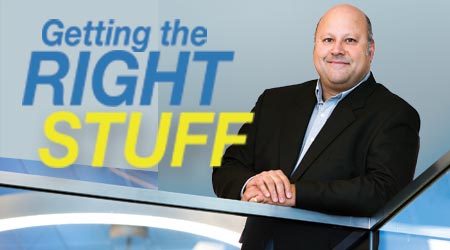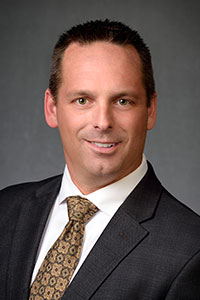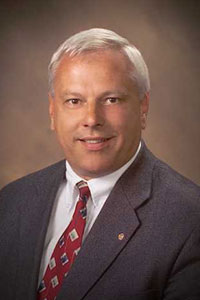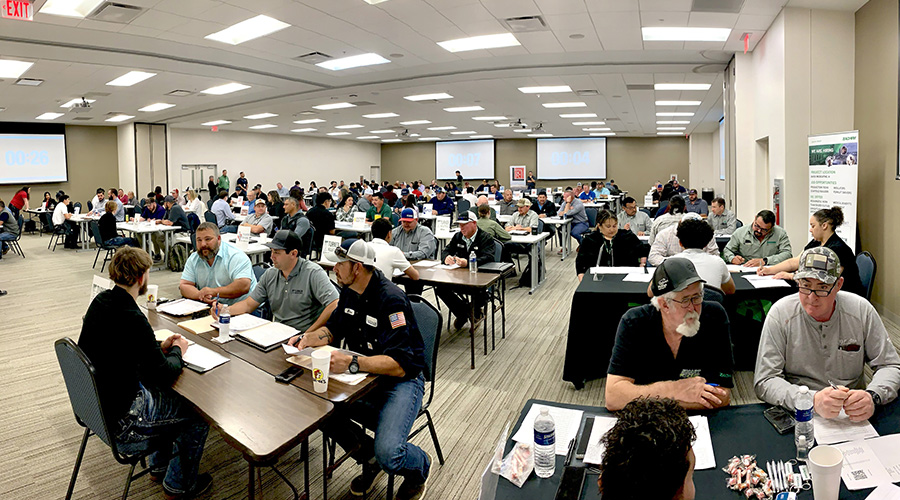 In-house specs enable Hobbs Brook Management to ensure that products used in its buildings meet corporate goals, says Bradley Cardoso, principal architect at the firm.Shannon Power Photography
In-house specs enable Hobbs Brook Management to ensure that products used in its buildings meet corporate goals, says Bradley Cardoso, principal architect at the firm.Shannon Power PhotographyGet Operations Staff Involved Early in Product Selection
Who is going to maintain the products selected? Those folks should definitely be given the opportunity to weigh in on which products will be used.
Another important tool for effective product selection is to get the operations staff involved early in the process.
“They have to be involved because they are the ones that have to maintain it moving forward,” says Tetrault. “If you have new construction or renovation — the specifying of systems, equipment, technology — it should be 100 percent reviewed and approved by the facilities management team because they have to maintain it.”
“
Specifications for systems, equipment, and technology should be 100 percent reviewed and approved by the FM team.
— Jeff Tetrault, Vice President of Facilities Management, Crouse Health
Hurtado agrees, noting that it’s “common sense” to get the input of a group of people who “will have to clean, care, patch, and replace” the products and technology for years to come.
“It has to stand the test of time and they are the ones who know that best,” he says.
Offerman says that his facilities team must know how to service and maintain the products in the building, whether it’s in-house or third-party service and maintenance. A key step in doing that is writing specifications for a project that aren’t product specific but delivery specific, meaning that the products will match the needs of the project, he says.
“What would scare me is if they come in and say that we bought a new system but no one knows how to maintain it, and there’s one service provider for it on the other side of the country,” Offermann says. “So prior to a product being purchased, the selection should be reviewed by local teams or those responsible for maintaining it so that they can do their due diligence on it.”
Part of that review is making sure that the product will work in the space where it is to be installed. “It doesn’t do any good to put the air conditioning in the ceiling and there are cubicles below it so that folks can’t access it,” Offerman says.
Like Offermann and Hurtado, Peter Strazdas, Western Michigan University associate vice president of facilities management, says it’s important to involve the people who maintain the assets — the products and the technology — and live with the building long after the architects and contractors are gone. “We’re in higher education,” Strazdas says. “We’re not going to be bought by a company in New Jersey anytime soon, so we’re in this for the long run. So total cost of ownership is a great concept and where you find best value in the long run. That might mean higher costs on the front end and lower on the back end.”
“
Total cost of ownership is a great concept and where you find best value in the long run.
— Peter Strazdas, Associate Vice President of Facilities Management, Western Michigan University
It’s a matter, Strazdas says, of balancing the in-house staff with outside professionals and facility industry publications. The in-house staff has knowledge of the facilities, what’s in them and how to maintain them, while the outside professionals, such as architects and contractors, can bring a new perspective, he says. Industry publications contain useful information, so that facility managers can keep up with developments in technology. “We have to balance what we think is right, with the professionals and what the market exposes us to,” Strazdas says. “There are tough calls sometimes, but we’re biased with what we believe in: the best total cost of ownership.”
Strazdas advises facility managers to stay connected. He recommends being involved in associations with best practice papers that are written by peers, taking the time to meet with other peers, and reading blogs written by peers.
“Peers are the secret network,” Strazdas says. “What really works is sitting down at a conference at lunch or a session in the evening and talking to people about their challenges and issues.”
Cushman & Wakefield’s Offermann stresses that selecting products and technologies requires work: research, time, and effort. “It’s something you have to actually concentrate on and get done,” he says. “You have to find the time, period.”
Desiree J. Hanford, a contributing editor for Building Operating Management, is a freelance writer who spent 10 years as a reporter for Dow Jones. She is a former assistant editor of Building Operating Management.
Email comments to edward.sullivan@tradepress.com.
Related Topics:
















